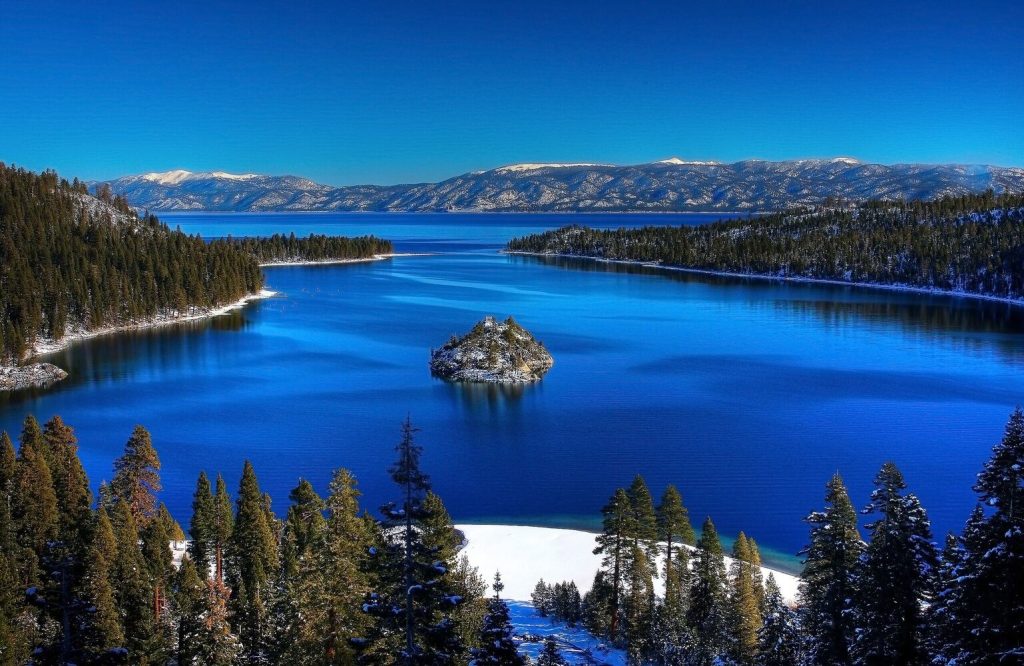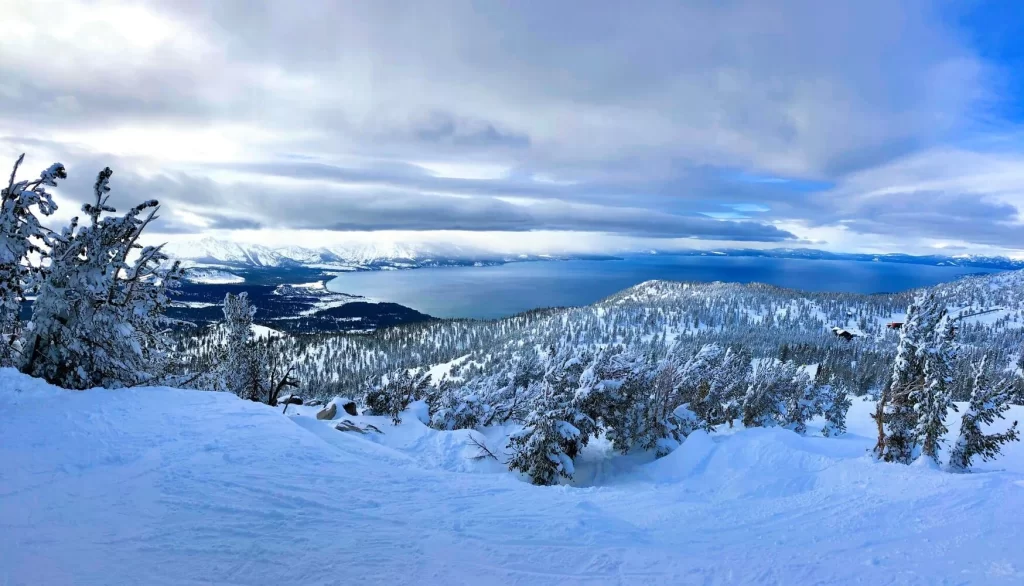In recent days, there’s been a lot of buzz about the new Liquid Glass interface introduced across Apple’s latest operating systems. For macOS, Apple has a longstanding tradition of naming its desktop operating systems after landmarks in California. Starting with OS X Mavericks—named after a popular surf spot near San Francisco—Apple has, up to macOS Sequoia, named twelve different locations, including mountain ranges, coastal regions, deserts, vineyards, and national parks. Most recently, Apple chose Lake Tahoe as the 13th California landmark to lend its name to macOS 26..

Lake Tahoe is not located entirely within the state of California; rather, it serves as a natural boundary between California and Nevada, with two-thirds of the lake lying in California and one-third in Nevada. It was first discovered by explorer John C. Frémont in 1844. Over the years, it went by several names—including Bonpland, Mountain, and Bigler—before officially being named Tahoe in 1945. The name was coined by journalist Henry Degroot and is derived from the Washoe language, meaning “the lake” or “big water.”

In the 1860s, loggers stripped the land surrounding the lake bare to supply timber for nearby silver mines. It took nearly two decades for the area to begin recovering. Since the mid-20th century, the lake has become a hub for tourism and recreation.
Lake Tahoe, located in the Sierra Nevada range—primarily within California, with a portion extending into Nevada—is the largest alpine lake in North America, covering 496 square kilometers and stretching 35.4 kilometers in length. It is the second-deepest lake in the United States and the tenth-deepest in the world. Its waters are famously clear: in some areas, objects can be seen at depths of up to 23 meters. In the 19th century, historical records noted visibility as deep as 36.5 meters. Sitting at an elevation of 1,897 meters above sea level, Lake Tahoe reaches a maximum depth of 501 meters, with an average depth of around 300 meters.
An estimated 150 cubic kilometers of water in the lake is 99.9% pure, fed primarily by snowmelt and rainfall. This water source is naturally low in nutrients and carries little sediment, resulting in minimal plant life—apart from algae—capable of clouding its clarity.
In summer, surface waters can reach temperatures of around 20ºC, while depths below 200 meters remain at a chilly 3–4ºC. This temperature difference creates a stratified thermal layer, keeping the upper waters remarkably clear.
Surrounding the lake are towering mountains and sheer granite cliffs, which act as natural filters. As a result, any runoff entering the lake is purified by the surrounding rock, helping to preserve its exceptional transparency.

The Allure of Lake Tahoe Extends Beyond Its Majestic Scenery — It’s Been Dubbed the “Loch Ness of North America”
Lake Tahoe’s appeal is not limited to its awe-inspiring natural beauty. The lake has long been the subject of legend and speculation, often referred to as the “Loch Ness” of North America due to persistent rumors of a prehistoric creature dwelling in underwater caverns.
One widely circulated claim suggests that famed explorer Jacques Cousteau dove to the lake’s depths in the 1970s and reportedly said, “The world is not ready for what’s down there.” While this quote remains unverified, it has fueled decades of curiosity and mystery.
Indigenous Paiute and Washoe tribes have passed down stories for generations about a creature living beneath the surface. In the 1950s, two officers patrolling the lake reported seeing two large black humps rise from the water. Around the same period, divers claimed to have discovered a cave where a mysterious creature stirred up clouds of sediment before vanishing into the darkness. More sightings followed: in 2004, a visitor captured a photo of what he described as a dark hump resembling the creature’s head; and in 2006, a vacationing family reported seeing a massive, black, fish-scaled being — sturgeon-like in appearance — moving rhythmically in the water.
Despite numerous accounts, the true nature of these sightings remains unknown.
With each new macOS release, Apple typically includes both abstract animated wallpapers and high-resolution photographs reflecting the theme. The beta version of the upcoming release currently features a dynamic wallpaper inspired by Lake Tahoe’s crystalline clarity. However, if tradition holds, Apple’s official photographic backdrop could be nothing short of breathtaking.